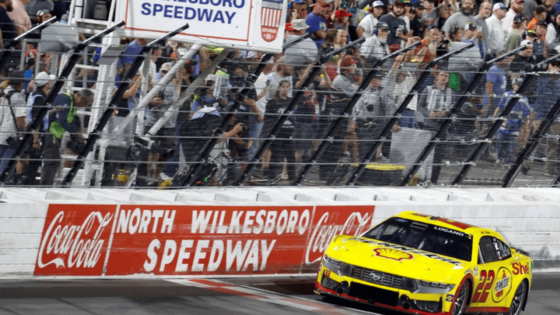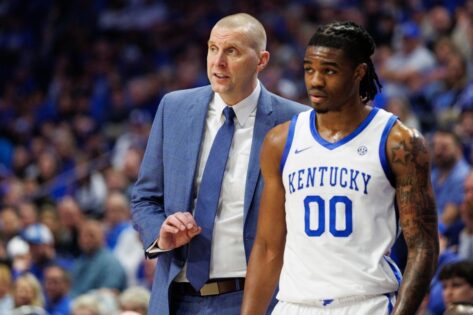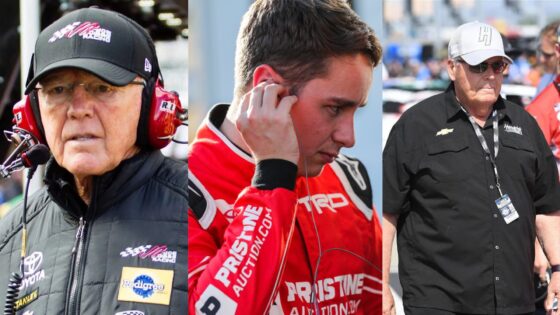The NASCAR All-Star Race qualifying is a high-octane spectacle that tests every ounce of a driver’s skill, a crew’s precision, and a team’s heart. It’s not just about speed—it’s about who can rise under pressure. This weekend’s spectacle is heating up, and here’s everything you need to know about the qualifying procedure. Buckle up, because this is where the magic happens!
NASCAR All-Star qualifying format
On Friday, drivers for both the All-Star Open and All-Star Race dive into a gripping three-lap qualifying session at North Wilkesboro Speedway. This isn’t your average lap-around-the-track deal. Each driver pushes their car to the limit, knowing these laps set the lineups for the All-Star Open and the All-Star Heats. After the second lap, every team faces a make-or-break moment: a mandatory four-tire pit stop. The fastest pit crews don’t just shine—they earn prime pit stall selections for Sunday’s All-Star Race and grab rewards in the pit-stop challenge.
From this session, the top eight drivers advance to a thrilling head-to-head elimination bracket. Picture two cars staged near pit road, engines roaring, tension thick. At the sound of an alert, drivers peel into their pit boxes for another lightning-fast four-tire stop. The moment the jack drops, it’s pure chaos—no speed limit—as they race back to the start/finish line.
The first car advances; the other’s out. This brutal bracket shrinks eight to four, then four to two, with the final duo battling for pole position in Sunday’s All-Star Race. Drivers knocked out in the first round take spots five through eight, while those eliminated in the second round claim third and fourth, all based on their initial three-lap qualifying speeds.
Saturday ramps up the stakes with two 75-lap All-Star Heats, reserved for drivers who’ve won a Cup Series race in 2024 or 2025, automatically qualifying them for the All-Star Race. These heats aren’t just warm-ups—they decide the starting grid. The first heat sets the inside lane for Sunday’s race, while the second heat locks in the outside lane. It’s a chance for the sport’s elite to flex their muscle and set the tone.
For those who didn’t auto-qualify, Sunday afternoon’s 100-lap All-Star Open is their shot at glory. This race is a pressure cooker, with a competition caution at lap 50—meaning the yellow flag waves no matter what, giving teams a chance to strategize. The top two finishers punch their ticket to the NASCAR All-Star Race, and a third driver gets in through a fan vote, a nod to the passionate NASCAR faithful.
This qualifying format is a test of nerve, teamwork, and raw talent. From the roar of the engines to the lightning-fast pit stops, every moment is a story of hustle and heart.
How did the All-Star Open race go?
The NASCAR Cup Series All-Star weekend at North Wilkesboro Speedway kicked off with a bang, and the first qualifying results for the All-Star Open have everyone talking! Shane van Gisbergen, the Trackhouse Racing superstar, absolutely owned the session, snagging pole position with a jaw-dropping lap of 1:28.684 seconds in his No. 88 Chevrolet. He beat out rookie Carson Hocevar by a solid two-tenths, setting the stage for a thrilling Sunday.
Sunday’s All-Star Open is intense—18 drivers duking it out for just two coveted spots in the All-Star Race happening later that night. It’s a high-pressure showdown, and van Gisbergen’s pole has him in prime position. Right behind him, Hocevar showed serious grit in second, proving he’s no slouch. Noah Gragson, Michael McDowell, and Ryan Preece rounded out the top five, each driver hungry to make it through.
But for Bubba Wallace, the day was a total heartbreaker. The No. 23 Toyota driver looked like a contender in practice, posting the third-fastest time and raising hopes. Then, disaster struck in qualifying—a speeding penalty cost him dearly, with 10 seconds tacked onto his time. That dropped him to a crushing 14th place.
The All-Star Race itself is a big deal—250 laps on the iconic 0.625-mile short track, with 20 drivers already locked in, including defending champ Joey Logano. History shows this race is a crystal ball: in three of the last five years, the All-Star winner—Chase Elliott (2020), Kyle Larson (2021), or Logano (2024)—claimed the Cup title. Even better, the winning team (Hendrick Motorsports or Team Penske) has taken the championship four times since 2020. “I’m looking forward to getting up there,” Logano said. “The track’s really wide for a repave. It’s a really good race track. I’m looking forward to seeing where it gets to this year. Last year it widened all the way out to the wall.”
Wallace’s setback has fans on edge, but he’s not giving up. Three more drivers join via the Open or Fan Vote, with Noah Gragson, a two-time Fan Vote winner, in the mix. Qualifying Friday includes a Pit Crew Challenge, and Saturday’s heat races set the grid. With six former All-Star winners like Larson, who could tie Jimmie Johnson’s record, and a historic track reborn, Sunday’s race is pure NASCAR magic.
The post How Does NASCAR All-Star Qualifying Work? Here Is Everything You Need to Know About the Pre-Race appeared first on EssentiallySports.



